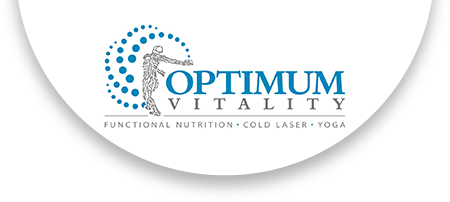Why Do I Need to Supplement with Vitamin D
Why Do I Need to Supplement with Vitamin D?

Last year I explained how Vitamin D isn’t a vitamin but rather a “pro-hormone” (precursor to our hormones). You can find that article here. That information amazed quite a few of you. It amazed me as well when I learned how it all worked! It’s the one vitamin that isn’t actually a vitamin at all.
With the physical location of the clinic being in Wisconsin and most clients living in the Northern Hemisphere, as a Middleton Alternative and Holistic Practitioner, I’m often asked about Vitamin D in the winter; “Do we need it?” “How much do I take?” and “What’s the difference between Vitamin D2 and Vitamin D3?”
These are all great and valid questions. If you read anything in the nutrition field, it not only says we need that specific food or nutrient but that we need it forever! The world is changing around us, and we have to adapt. Yet, I always wonder how we made it this far without ___fill in the blank___ superfood. Do you ever ask yourself that question?! Hopefully, the information below on Vitamin D will help to answer some of your questions.
Hint: Do you need to supplement? Probably. Do you need it forever? No. Only every winter 😉
Do we need to supplement with Vitamin D in the winter?
In short, yes, if you live north of the 37th parallel. Most of us need Vitamin D3 supplementation in the winter, and some are even prescribed it from our medical doctors to take year long. When vitamins were first being discovered, we categorized what they were based upon what disease the deficiency of said vitamin would produce. Vitamin D deficiency produces Rickets, a disease indicative of soft, weak bones. Rickets, therefore, is Vitamin D deficiency. Make sense?
The first clear description of Rickets was in 1645. However, it was not until the Industrial Revolution with the mass movement of the population from the farms to the smoke-filled cities that Rickets became a public health problem. In 1922, animal models for Rickets showed that Rickets could be cured with Cod Liver Oil. Isn’t it fascinating that Cod Liver Oil contained enough supplemental Vitamin D for us at the time?! Today, the small amount of Vitamin D in Cod Liver Oil is helpful (and one of the few natural sources) but it’s not typically enough to support us all winter long.
Those of us living above the 37th parallel do not make Vitamin D in the winter. Actually, because of the shift in sunlight, we do not make Vitamin D, mid-October through mid-April. This is the crucial time in which to supplement.
Here in the states, we began adding Vitamin D to foods (primarily milk) in the 1930s and, by doing so, nearly eliminated Vitamin D deficiency in children. Until recently, we thought the added Vitamin D to foods was enough.
Recently, medicine began to pay more attention to Vitamin D. With an increase in certain diseases; it begged the question, “Are we all deficient?” “What’s a functional level of Vitamin D?” and “What role is it playing in health?” The results were astounding. A majority of Americans and a significant number of Europeans were deficient. “We’re just starting to scratch the surface of what the health effects of vitamin D are,” said Adit Ginde, an assistant professor at the University of Colorado Denver School of Medicine and co-author of a major 2009 study.
This quote amuses me. Now, in the twenty-first century, just NOW we’re starting to “scratch the surface” with Vitamin D. The nutrition, health, and medical fields are confusing because we know a whole lot, yet we don’t know it all. Keep this in mind.
How does it work?
We synthesize Vitamin D3 in the skin through exposure to sunlight. Whether ingested or synthesized through the skin, Vitamin D goes through two transformations. The first occurs in the liver and gives rise to calcidiol. The second takes place in the kidneys and other cells and forms calcitriol, the active hormone. Proper intestine, liver, and kidney function are needed to convert the Vitamin D we absorb.
What are the correct levels of Vitamin D?
This is going to vary based upon what health professional you speak to. Research says one thing, some medical professionals agree, and some vehemently disagree. Let me say this, and many of us in the holistic or restorative health field would agree, there’s a lab range, and then there’s a functional or optimal range. The Institute of Medicine (IOM) defines insufficiency as less than 11 ng/mL. Using that as a threshold, everyone’s numbers suggest they are sufficient. Then again, the U.S. spends about twice what other high-income nations do on health care but has the lowest life expectancy and the highest infant mortality rates. Common sense tells me our lab ranges and/or definitions of sufficient might be slightly off!
How can I get my Vitamin D levels tested?
Vitamin D is tested through blood (serum). It’s not included in your Comprehensive Metabolic Panel (CMP) or Complete Blood Count (CBC). These are the labs most often run if you ask your doctor to “run blood work.” You’ll have to ask for your Vitamin D to be run separately. If you’ve never had it run, I suggest finding out where you are and what your baseline is right now. The reason I say this is because more and more kids (18 and younger) are coming in with low Vitamin D. We’re also seeing more and more women with hormonal dysregulation and an increase in both men and women with anxiety. Think there’s a connection?
Why Vitamin D? What does it do?
I’m not a fan of lists that bullet point what each vitamin or mineral does. We never remember these lists. Furthermore, such an exhaustive list makes it seems that we can’t function without said nutrient.
Vitamin D is known mostly for its positive effect on the immune system. However, it also stimulates calcium and phosphorus absorption in the intestines, which is needed for bones and cardiovascular function. If you remember nothing else, remember that it plays a role in cell proliferation (cell growth). Think Vitamin D is needed when the body is healing? You’re right on!
Vitamin D2 vs. Vitamin D3: What’s the difference?
Most supplements on the market these days contain Vitamin D3. You’ll find both Vitamin D3 and Vitamin D2 in prescribed medications here in the U.S.
Sunshine exposure and fish consumption provide Vitamin D in the form of D3. A plant-derived form of vitamin D, named vitamin D2, was produced in the early 1920s through ultraviolet exposure of foods. This process was patented and licensed to pharmaceutical companies, which led to the development of a medicinal preparation of Vitamin D2 called Viosterol. Today, it’s most commonly referred to as Ergocalciferol.
Both Vitamin D2 and Vitamin D3 get converted into 25(OH)D; this is what we measure in blood. The increase in 25(OH)D was found to be 70% - 80% greater with Vitamin D3 than Vitamin D2.
Are there natural sources of Vitamin D?
Yes! We can get Vitamin D from sunlight, cod liver oil, swordfish, salmon, sardines, canned tuna, beef liver, egg yolks, and raw butter.
When supplementing with fish oils in order to ingest naturally occurring Vitamin D, pay attention. Many companies purify the product rigorously, which then denatures the vitamins. You will see them listed on the label, but they’re no longer naturally occurring. Instead, they have been added back in.
One reason we love Cod Liver Oil from Standard Process is that it still contains naturally occurring Vitamin D. The key is how the oil is processed. It has to be gently produced in order to preserve both Vitamin D3 and Vitamin A.
Should my Vitamin D supplement be combined with anything else to improve absorption?
Calcium was the first choice for many years, suggesting this helped improve the absorption of Vitamin D. Although this can be helpful, new research has shown us that calcium doesn’t help as much as we first thought. Rather, Vitamin K2 is a superior adjunct. If you combine Vitamin D3 + K2, you increase the rate of absorption. If you take a fat-soluble vitamin, such as Vitamin D, in a liposomal form (fat base), then you will increase the rate of absorption 3.5 times. We have several products that contain Vitamin D on hand, but we most often recommend Solray D from Physica Energetics as your main Vitamin D supplement. It’s Vitamin D3 combined with Vitamin K2 in a liposomal base.


